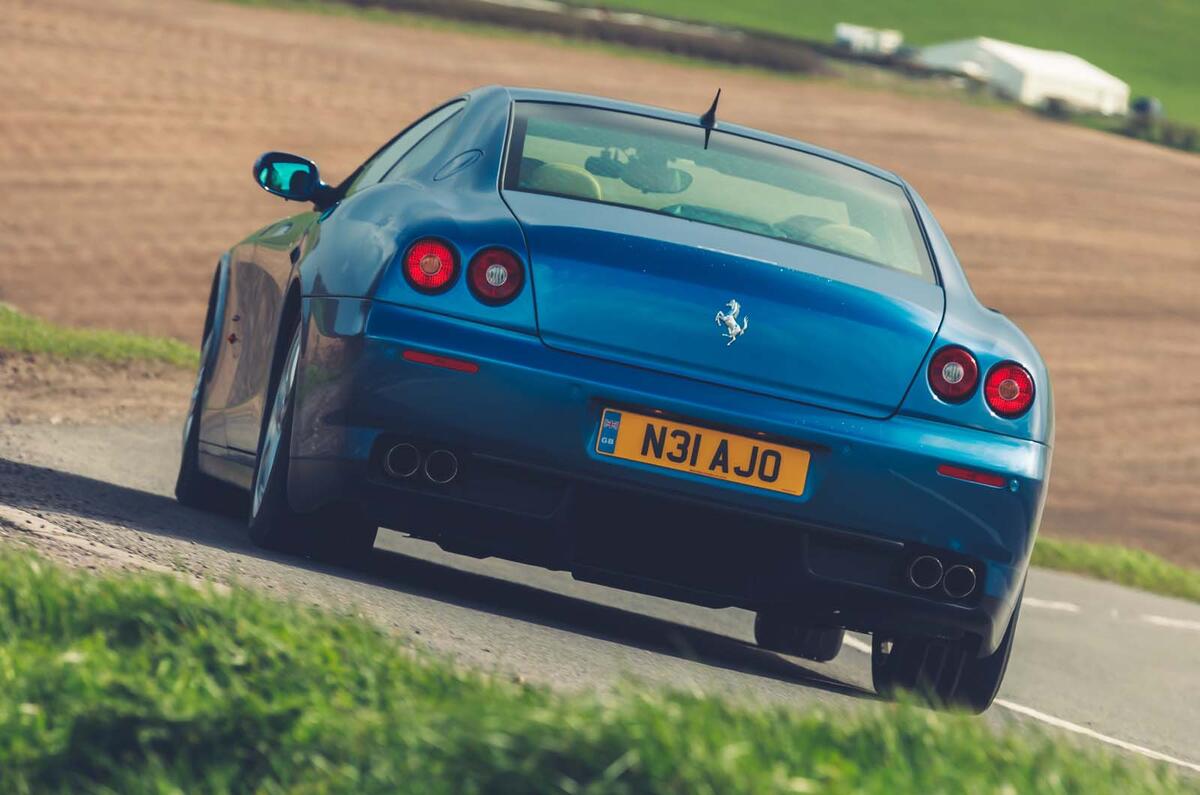Is the Ferrari 612 Scaglietti reliable?
As long as the V12 lump is regularly maintained, you shouldn't run into any major issues with a used 612. Parts are of course expensive to replace, but at least the Scaglietti arrived when Ferrari put more effort into its build quality.
Mechanical parts were extensively developed, too, so if you stick to the car’s service intervals, you’ll spend more time enjoying the 540bhp V12 rather than mending it.
Engine: This was the last 12-pot Ferrari with a rubber timing belt before the firm started using chains. Dealers recommend the belt be replaced every four years. Along with a service, that will cost around £4000.
Gearbox: Some forums say the automatic gearbox can suffer from glitches relating to the clutch positioning sensors, particularly if the car has been used in the stop-and-go driving environment of traffic jams.
Headlights: Some owners have complained of condensation collecting in the headlights if the car is kept outside or not under a cover.
This will either be because the waterproof sealants have degraded faster than expected, or they weren’t fitted with the utmost care at the factory. Budget around £1000 for replacement units.
Tyres, wheels and brakes: The low-profile tyres covering 19in or 20in rims don’t have much protection from potholes and rutted UK roads, so we would recommend thoroughly checking them.
If your car has carbon-ceramic brakes fitted, as the HGTC cars do, it is crucial that they are pushed hard every now and again. Otherwise, they will fail to function properly and new ones will have to be fitted.
And because they are carbon-ceramics, the price for replacements is likely to exceed £15,000.
Interior: To the left of the rev counter sits an electronic display that is now commonplace in Ferraris, but it was first introduced on the 612.
This means the teething issues that have since been ironed out are present, with the power supply and backlighting under the threat of malfunction. Ferrari recommends installing a new panel for £6500-£7500.
Elsewhere, it’s worth noting that the plastic coating of the switchgear can rub off on your hands and clothing in higher temperatures.
This can also happen if the car has been in storage and the switchgear hasn’t been used. Additionally, if the car is left in the sun, its leather trim can shrink visibly around the metal and plastic it covers.
To avoid paying for retrimming, consider buying a cover or heat shield for the windscreen during warmer months.
An owner’s view
Robert Whitehead: “I own a 2006 612 Scaglietti HGTS. The car is long and quite wide but very well balanced, with good turn-in and well-weighted steering.
"Grip is fantastic, with excellent feedback from the front wheels and a good sense of rear grip when it is wet or icy. The only negative is that this car does not have as much leg room for the driver as the long bonnet might suggest.
"But what I love most is the sound it makes. To my ears, it is one of the best-sounding cars on the road, coming very close to the sound of an Enzo. I drive with the windows down most of the time!”
Also worth knowing
Based on talking to buyers and visiting many online owners’ forums, this car is clearly very popular among those who have taken the plunge and has an almost indestructible engine.
Build quality issues normally synonymous with Ferraris of this age seem to be non-existent too. Even so, as with any Ferrari, a full service history from franchised dealers or respected specialists is essential.


















































